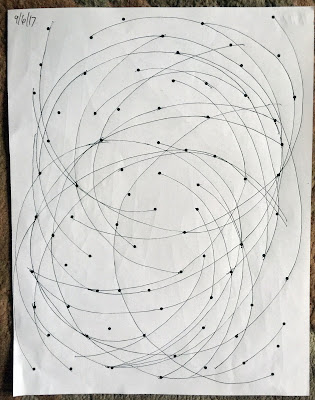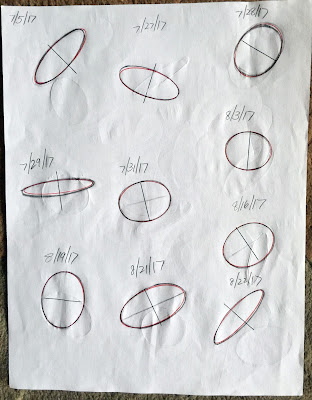I’ve talked a lot about improving my drawing by focusing on one skill at a time. In my case, that’s anatomy.
Although I have since stopped, I did, however, have one exception to this rule: mechanical skills.
I came across the mechanical skills exercises in the Scott Robertson “How to Draw” book, a book I recommend adding to your drawing improvement library.
This book is of additional benefit because it includes QR codes and a password to access supplemental videos.
The book begins with what on the surface look like easy, pointless exercises.
Don’t be fooled! These exercises—much like drawing cubes, spheres and cylinders—are EXTREMELY important and useful. They’re essential foundation-building skills and they should not be skipped or ignored.
I regularly fit these mechanical skills into my daily routine:
- draw straight lines
- draw straight lines over a straight line. I got this and the drawing over curves idea from Irshad Karim. (Tip: keep your eyes slightly ahead of your hand to better direct it.)
- draw over a curved line
- draw a line through one point
- draw a line between two points
- draw curves through multiple points
- draw ellipses:
- draw an ellipse then its minor axis
- draw a minor axis then an ellipse
- draw an ellipse in a box
- draw an ellipse between converging parallel lines
I’ve been practicing these faithfully with the knowledge that they will eventually be of use. I check my ellipse drawings with ellipse templates. The exercises's usefulness was revealed first when I watched a video of an artist drawing freehand straight lines—in ink!—for her comic book. People were amazed!
More importantly, I’ve been using my ellipse-drawing skills in my Proko anatomy drawing. In order to draw the bucket of the pelvis, one must be able to draw an accurate ellipse. That ellipse is the top plane of the bucket and its accuracy determines if the final bucket is correct.
So all of those seemingly mundane drawing drills ARE beneficial! I’ve created muscle memory and improved my eye-hand coordination. I’ve also noticed that with all of this drawing, I’m seeing mistakes sooner. I’m able to spot incorrect angles and shapes sooner than I did in the past which means I can get to the correct drawing sooner.
David Ogilvy said it best in “Ogilvy on Advertising” (1983) in regard to advertising but it also applies to drawing—"This willful refusal to learn the rudiments of the craft is all too common.” I’m not going to be that artist, the one who refuses to learn the basics. Because it’s knowledge and proficiency of the basics that allows one to stand out from the crowd.
I encourage you to get Robertson’s book and to spend some time on the mechanical drawing skills section. And check out Draw a Box for more helpful drawing drills.
And if you like these blog posts, please leave a question or comment or become a follower. I respond to ALL of your comments. Thanks!











No comments:
Post a Comment